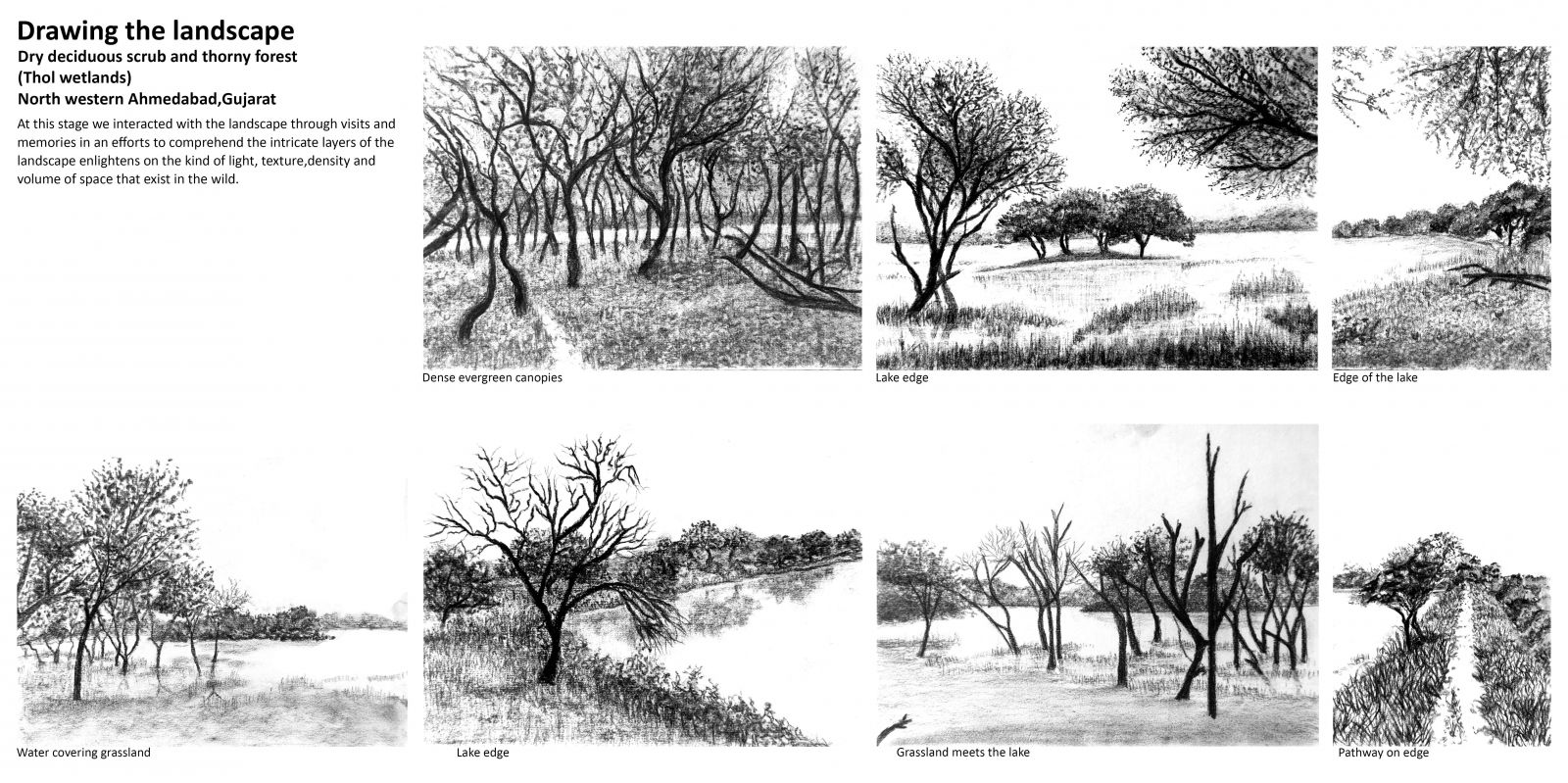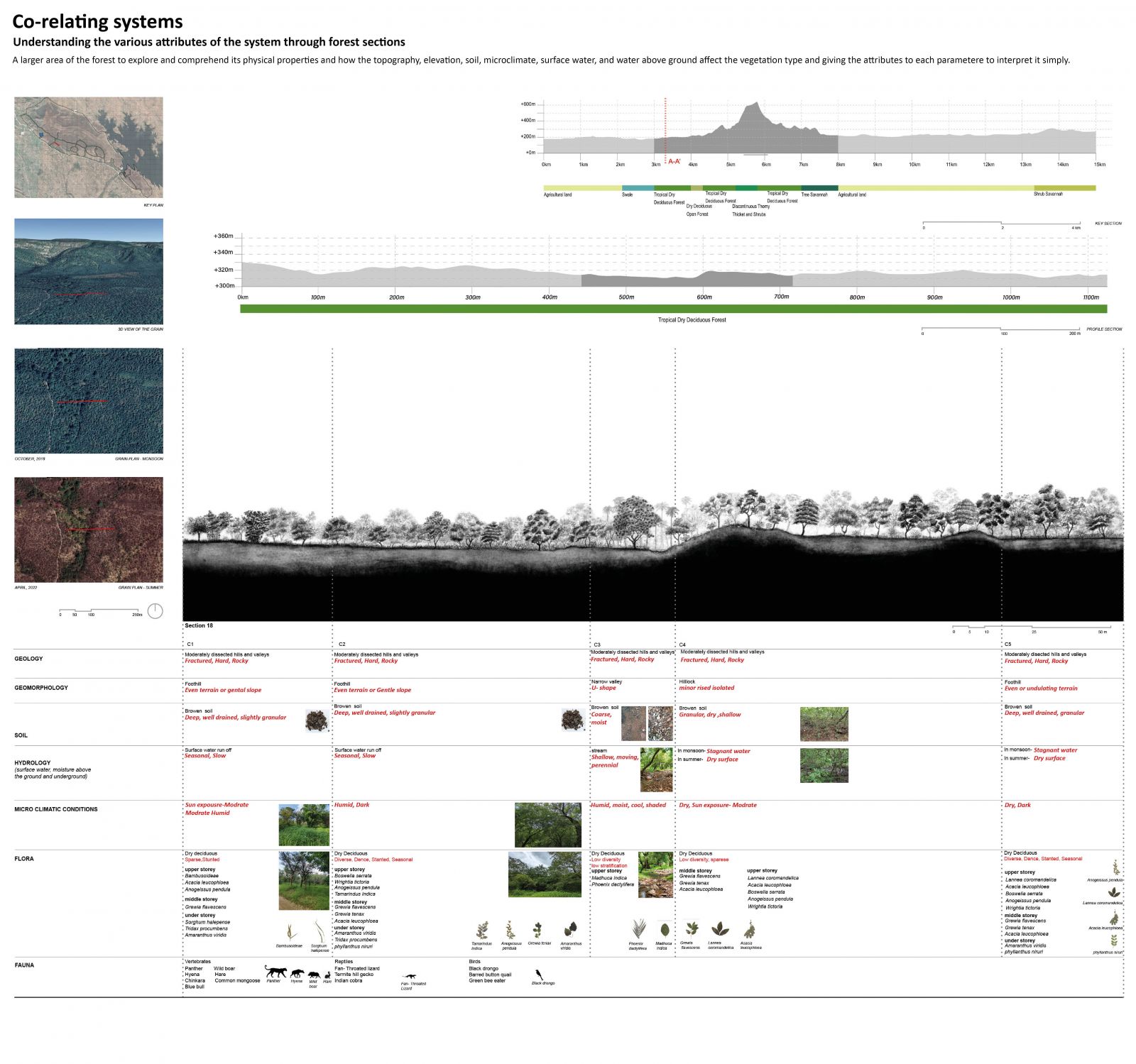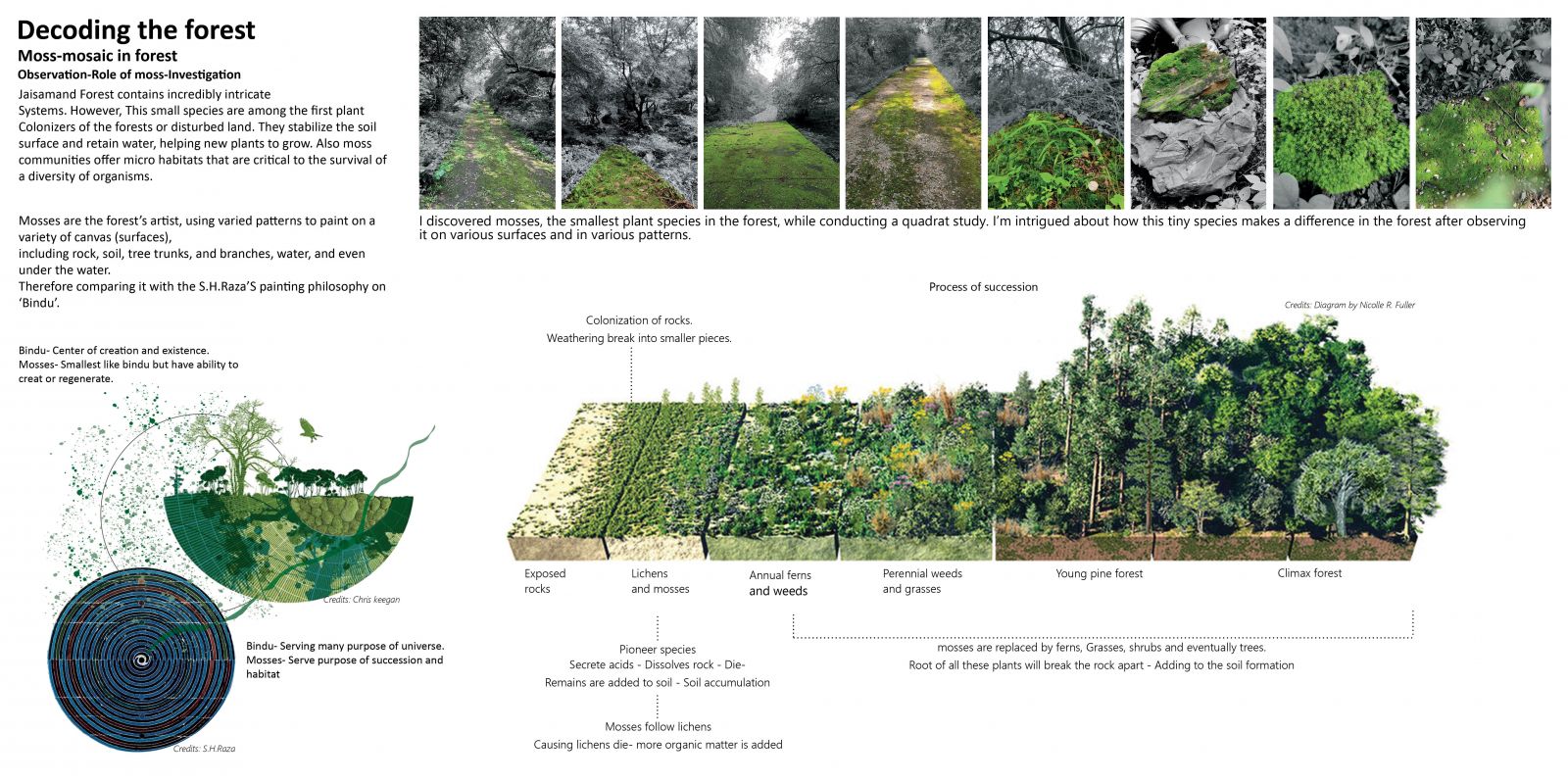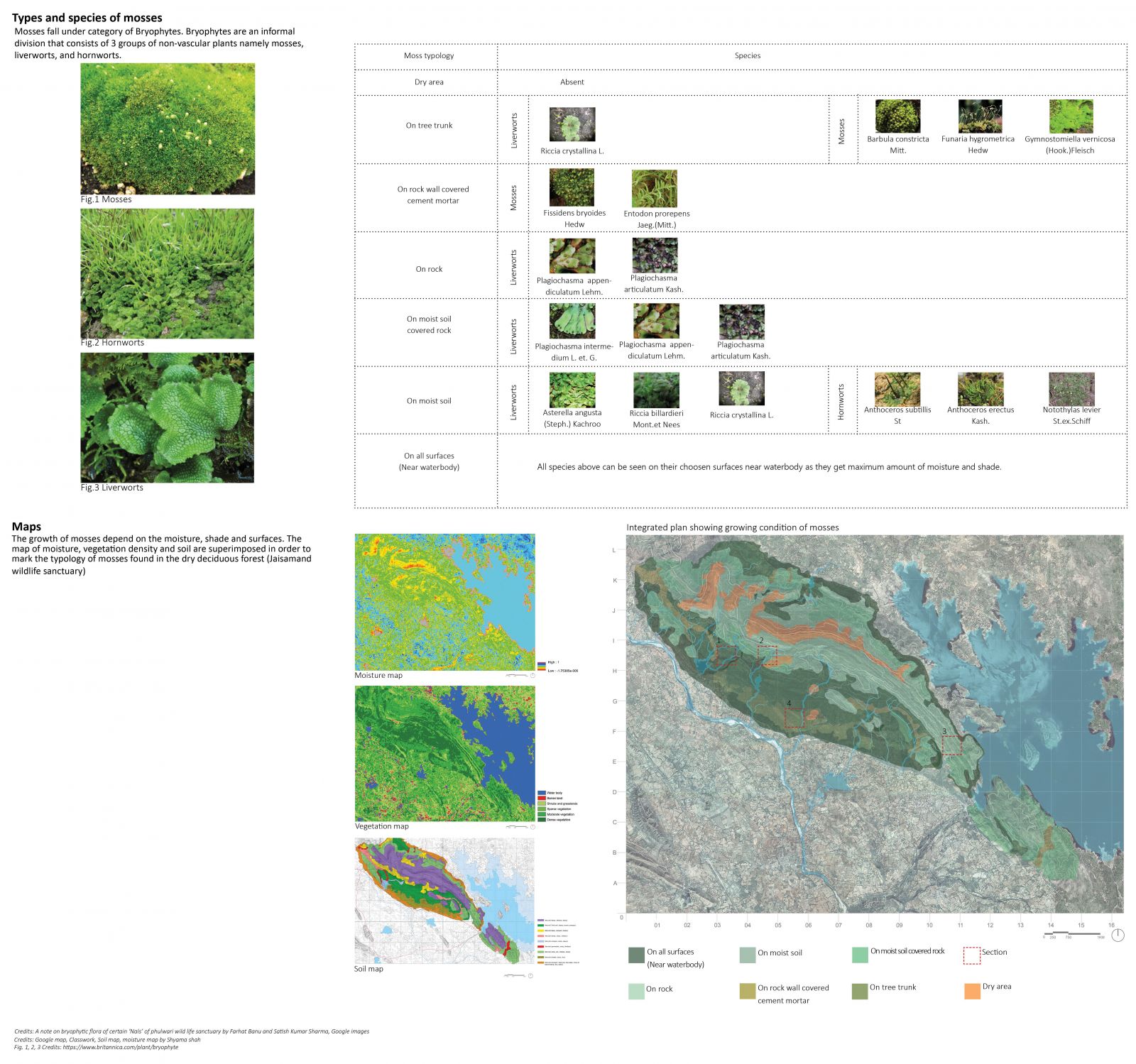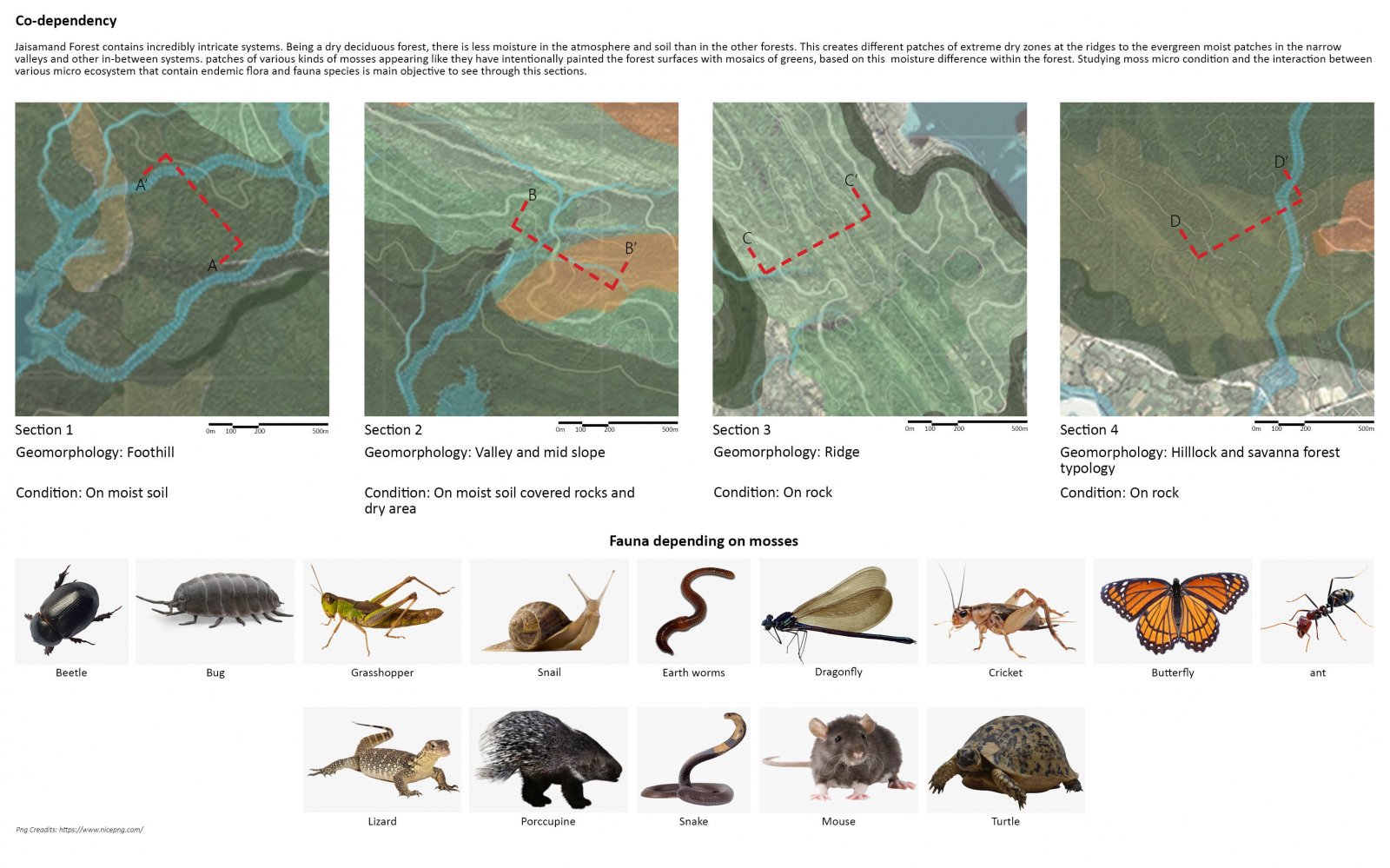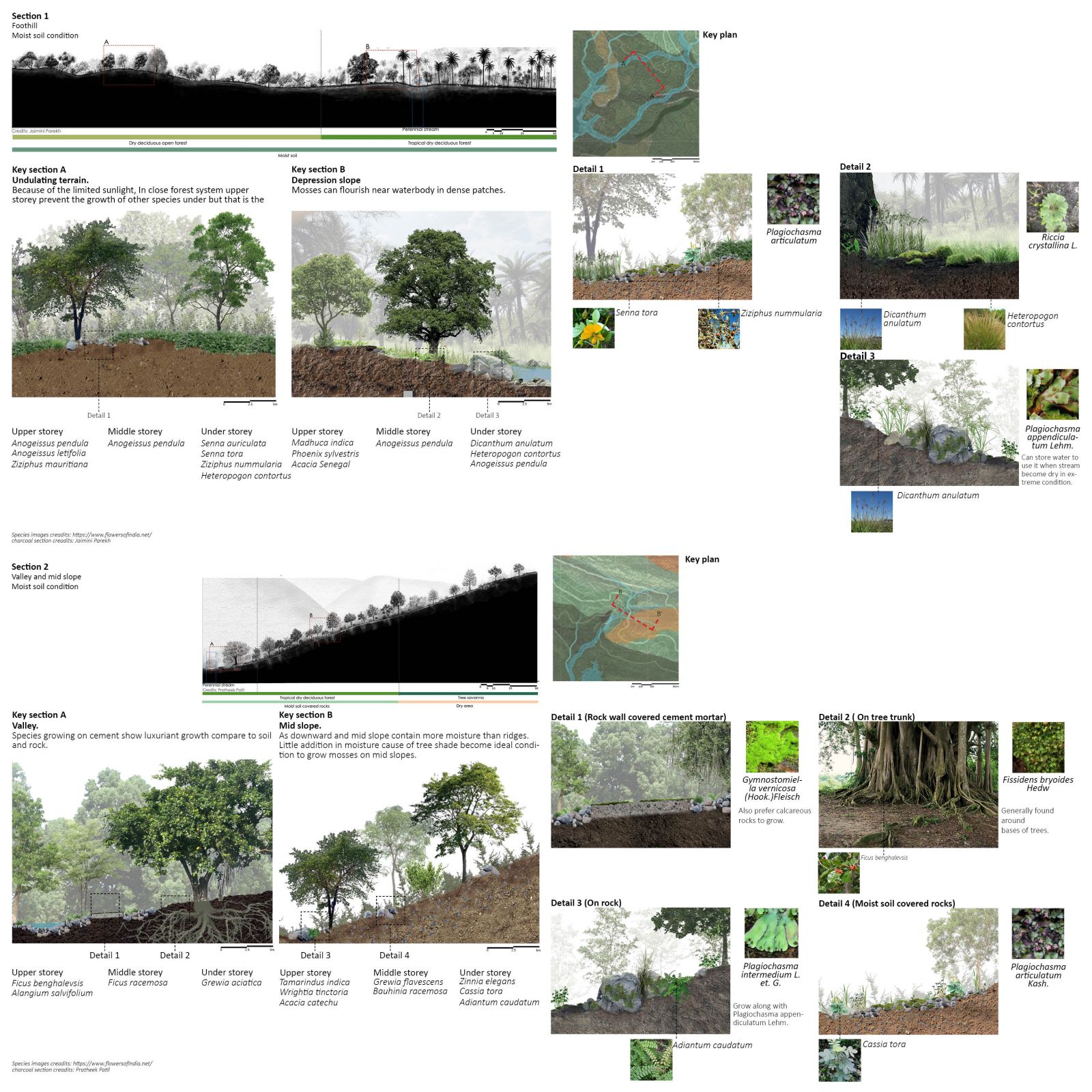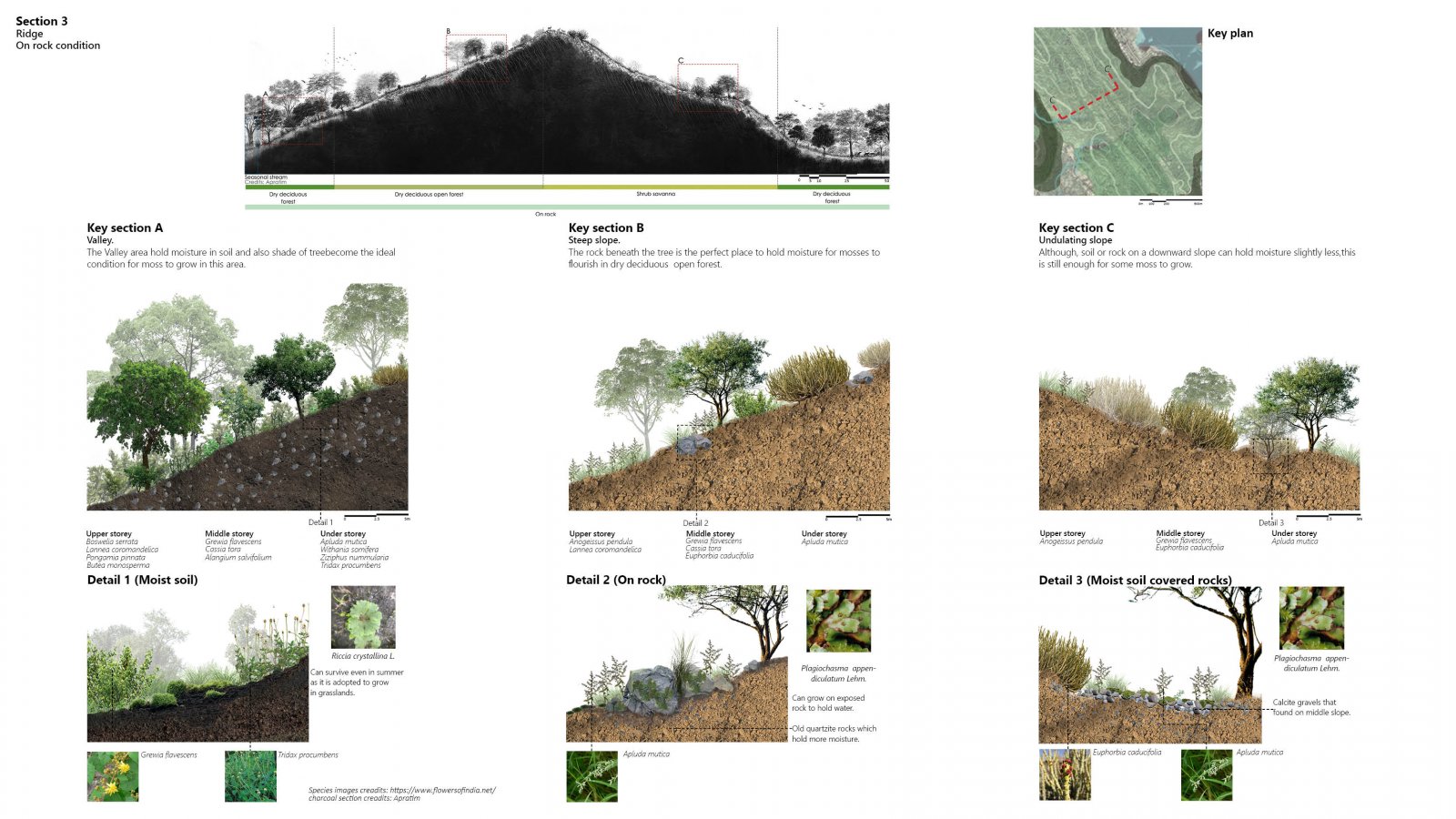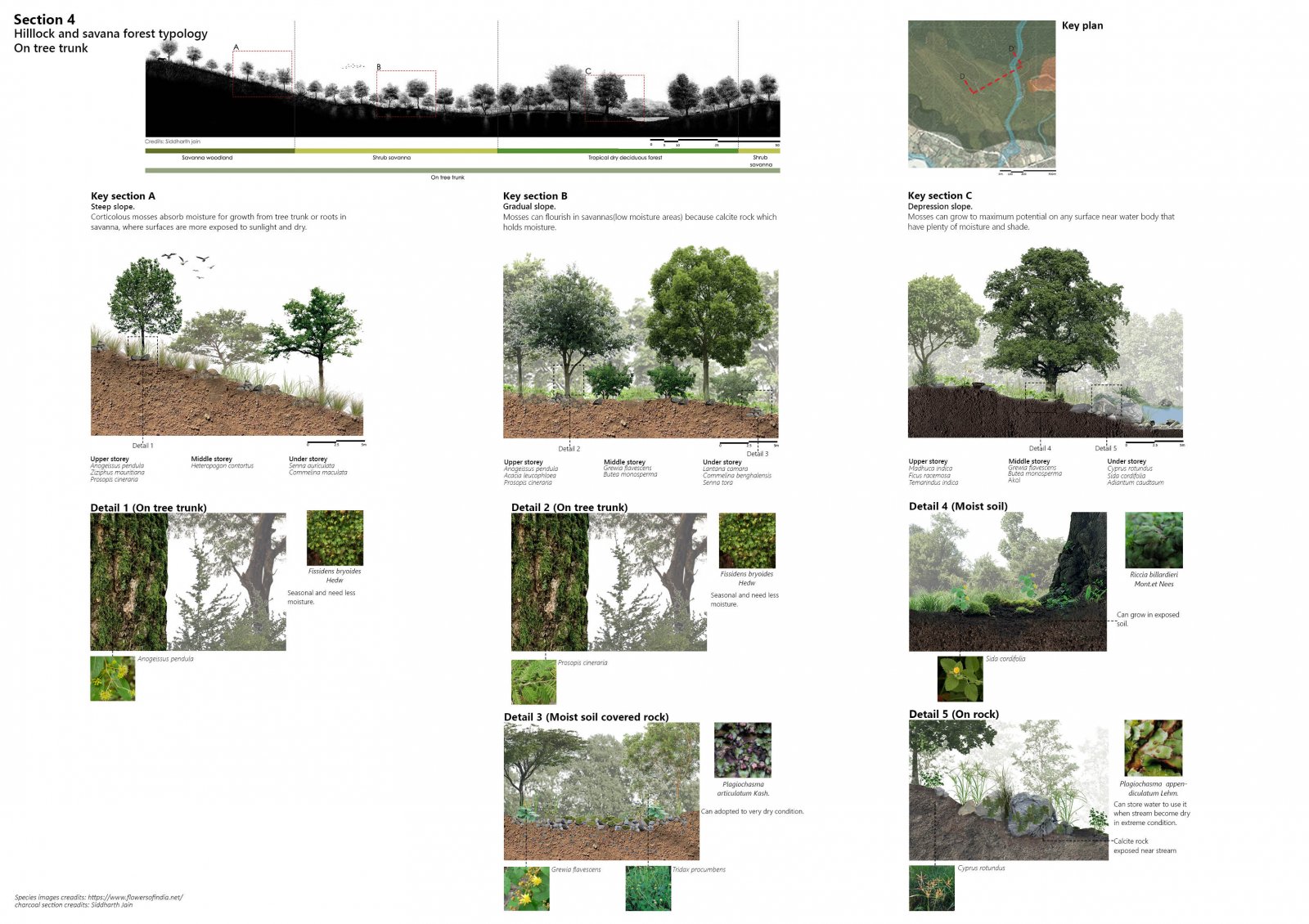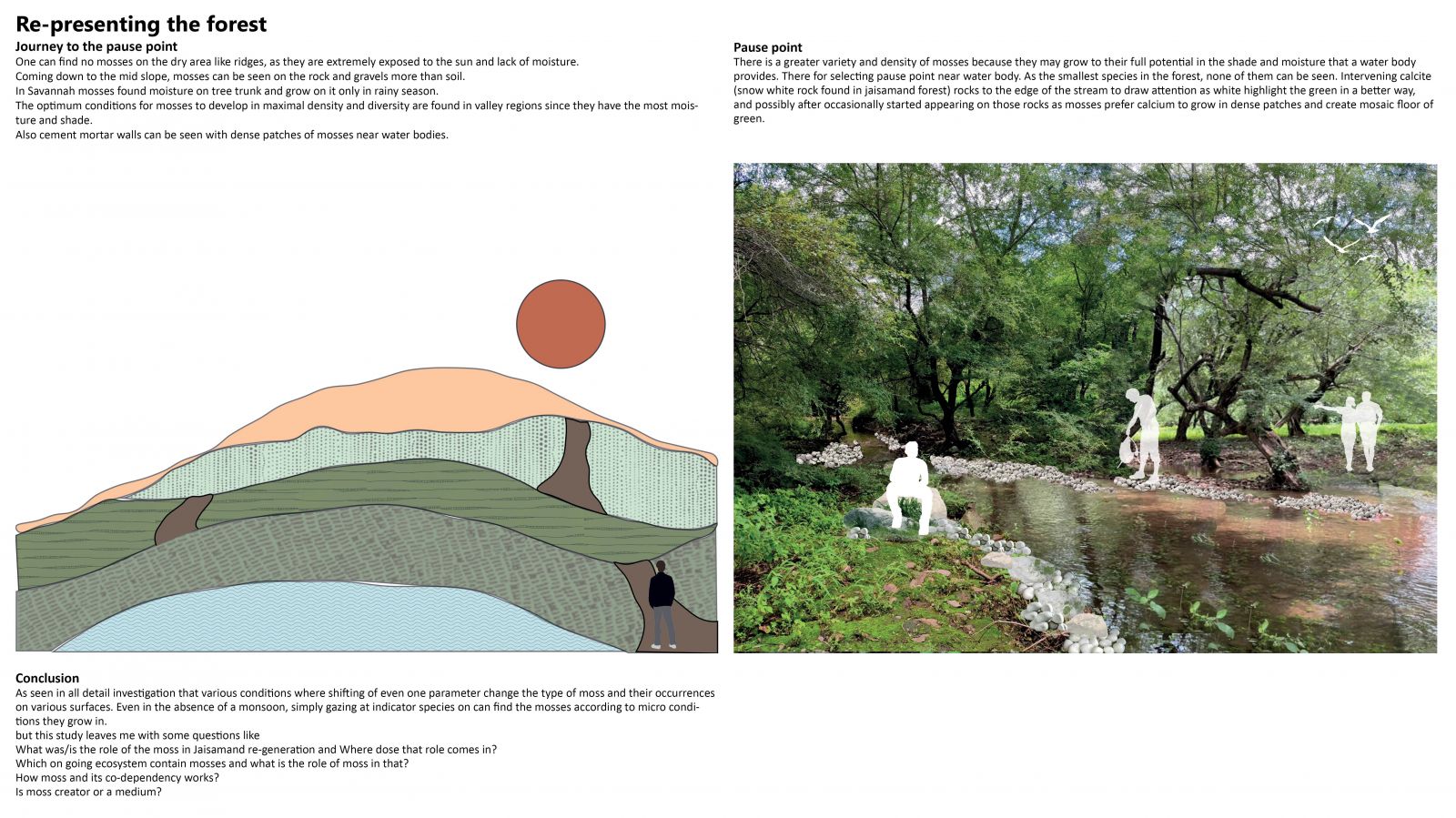- Student PATEL ANERI JAGDISHBHAI
- Code PLA22036
- Faculty Architecture
- Tutor/s Yati Sengupta,Priyal Shah,Divya Shah
Jaisamand Forest contains incredibly intricate systems. Being a dry deciduous forest, there is less moisture in the atmosphere and soil than in the other forests. This creates different patches of extreme dry zones at the ridges to the evergreen moist patches in the narrow valleys and other in-between systems. During my visit to the forest, I came across patches of various kinds of mosses appearing as if they have intentionally painted the forest surfaces with mosaics of greens, based on this moisture difference within the forest. When I looked in depth at the mosses via my lens, I wonder how they contribute significantly to succession in dry deciduous forests. They're among the first plant colonizers of the forests or disturbed sites. They stabilize the soil surface and retain water, helping new plants to grow. Also, moss communities offer microhabitats that are critical to the survival of a diversity of organisms. In connection with that, mosses appeared like the forest's artist, using varied patterns to paint on a variety of canvas (surfaces), including rock, soil, tree trunks, branches, and even surfaces under the water. Studying moss micro conditions and the interactions between various micro-ecosystems that contain endemic flora and fauna species is the main objective of the project.
